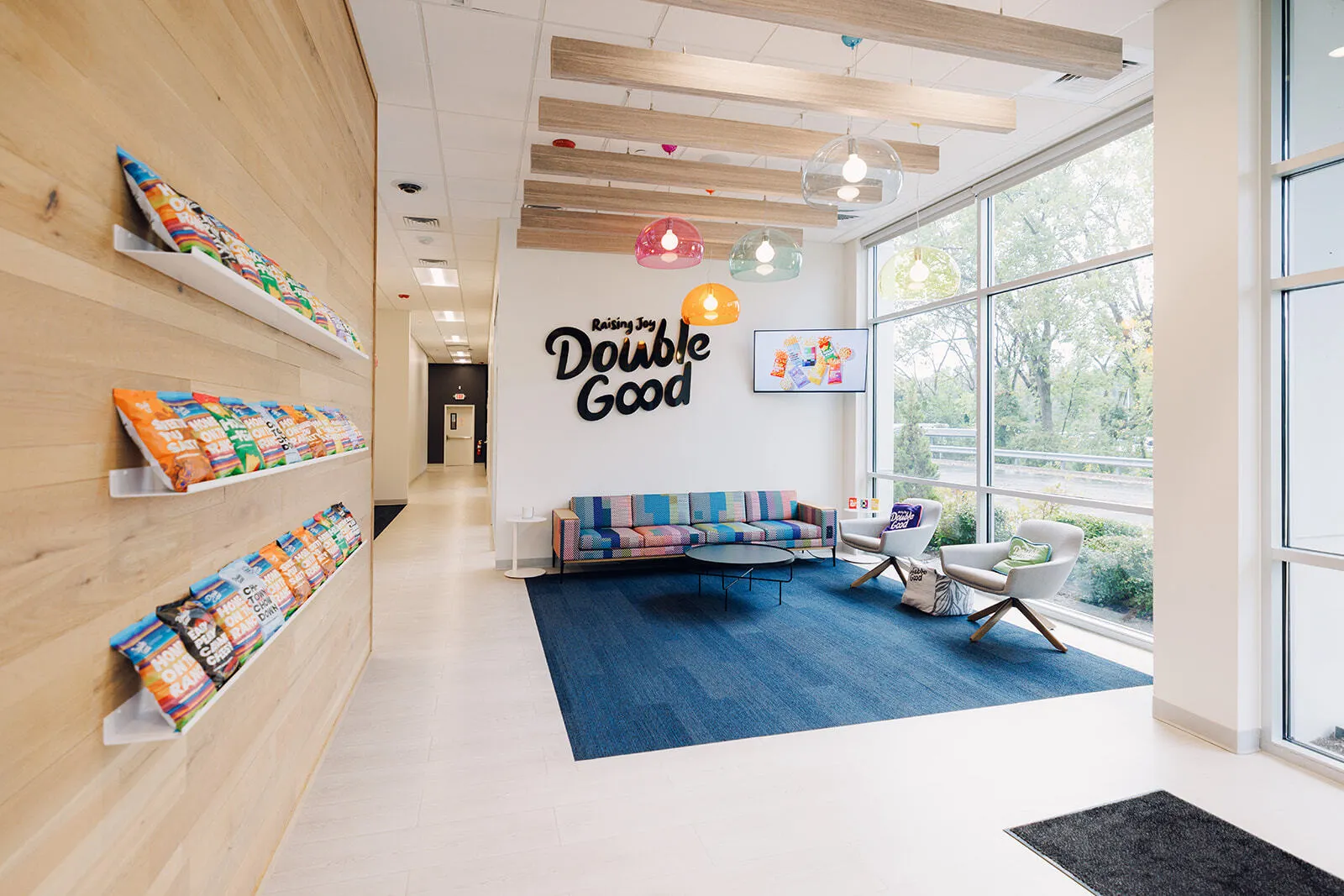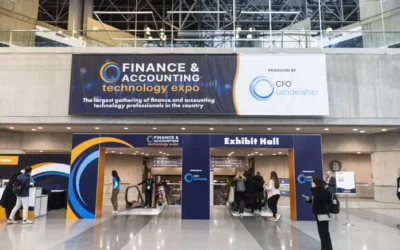Ahern Dull and Jessica Doyle came to Chicago-based popcorn fundraising company Double Good around the same time this summer. Dull started as CFO in June, while Doyle signed on as chief marketing officer in August.
Both had burnished their professional credentials at well-known organizations — Dull having served in the C-Suite at job search website CareerBuilder and Doyle as a VP for the National Basketball Association. But Double Good, a for-profit company that’s also a manufacturer with a nonprofit arm, marked a notable career shift for both.
The company, founded in 1989 as a small popcorn store at Chicago’s Navy Pier, has itself gone through several shifts and pivots over the years. These days, Double Good bills itself as a “virtual fundraising platform” for youth sports teams, bands and other organizations. Fundraisers keep half of the proceeds from their popcorn sales, with the remainder going to Double Good. The company, which produces its popcorn at a facility in Burr Ridge, Illinois, also operates a foundation that raises money for children with disabilities. The organization as a whole has an annual revenue of about $300 million and employs 300 people.
As Dull and Doyle settle into their new roles, they sat down with CFO.com to share how they approach leadership, the potential for CFO-CMO collaboration and the nuances of a dual-mission organization.
This interview has been edited for brevity and clarity.
DAN NIEPOW: You’re both fairly new to your roles. What is the first order of business for each of you?
AHERN DULL: For me, a lot of my time has been spent learning and partnering with Jess and other leaders on the executive leadership team. We have a tremendous amount of focus on continuing the growth trajectory of the company. That’s thanks to a lot of the efforts that Jess and her team are leading in the growth function.
We’re both learning, and we’re both sorting through how we can both allocate resources to continue to pour gas onto the flame of growth. I think it’s always easier to learn together.
JESSIC DOYLE: I’ll double down on that. We’re both learning from others in the C-Suite who have really deep experience. The manufacturing and shipping side of the business is totally new to me, too. Right now, I’m all about building relationships and understanding the business. In my case, I’m also charged with transforming my areas into growth engines for the business. We need to be a growth-centric organization rather than a cost center. That is a big shift in mindset, goals and tactics.

The mandates of your roles might sometimes conflict. What are some concrete areas where you find common ground and collaboration?
DULL: Ultimately, I think of it as a very healthy tension. There is good in naturally existing differentiation of perspectives: Jess probably wants to spend more, to try things, to test things and I’m probably trying to rein it back. But I think the benefit of those sometimes opposing viewpoints is that we can eventually come to the right answer through conversations and analysis. [The CFO-CMO relationship] is a unique one, but it’s critical for businesses.
Sometimes, there are aspects of spend that have an inherent benefit that you can’t necessarily measure in the short term. It has to be in the long term. And so I need to trust Jess’s perspective on those things.
DOYLE: It’s definitely a push-pull relationship, but a very healthy one. We still have to be aligned on our vision and goals for the company overall. I think when we sit in that C-Suite room, we’re representing our functions, but we’re also representing the business holistically. I think we all shift our mindset a little bit because of that.
“We’re both learning, and we’re both sorting through how we can both allocate resources to continue to pour gas onto the flame of growth.”

Ahern Dull
CFO, Double Good
Having Ahern as a partner who can challenge me, ask questions and make sure I’m making data-driven decisions helps me be more thorough in my approach. From my seat, I have to do a lot of my own education and early planning. For example, most of our paid media spend is direct response, which means that for every dollar out, I can track the number of people who start a fundraiser, how much they raise and so on. That’s pretty one-to-one. But then there’s also the branding side, where we’re starting to spend on things like a YouTube masthead, or a broader awareness play that’s not going to be as easy to measure directly. But the team trusts me that it will trickle down and ultimately benefit the bottom line. For my part, I need to explain what we can measure and what we can’t measure, along with any potential impacts on the business.
Double Good is a for-profit company, but you also operate the nonprofit Double Good Foundation. How do you each approach leadership for a dual-mission organization?
DULL: It’s actually even more interesting than how you’ve described it. We’re not just a traditional for-profit; we are at the unique intersection of a manufacturing entity with a tech-forward platform. Then you layer in the nonprofit foundation side, too. So yes, we do have a breadth of areas to tackle, but it all goes back to the mission, which is to help youth organizations. I don’t think there’s necessarily a disconnect in all we do. It’s all aligned under the same umbrella of doing some societal good. In some ways, that makes it very straightforward to lead.
How do you each think about communicating finance and business metrics to employees?
DULL: We are a fairly traditional private company in that respect. We’re not sharing broadly our full P&L with the full team. But, that said, we do communicate and share top-line metrics. That includes stuff like how much we’re raising on a per-organizer basis, how many organizations we’re working with and how many events they’re running. In my mind, that’s important because those are the rallying cries of the organization. Employees want to know how the business is doing and what impact they’re having.
DOYLE: I like to keep my teams focused on the things that they can impact. So, when it comes to overall company profitability, for instance, they don’t necessarily need to be thinking every day about how much headcount or manufacturing operations are costing us. What they need to focus on is: Are we generating new fundraising events? How do we keep the funnel healthy? How do we make our fundraisers more successful? These are the types of metrics we’re looking at.





